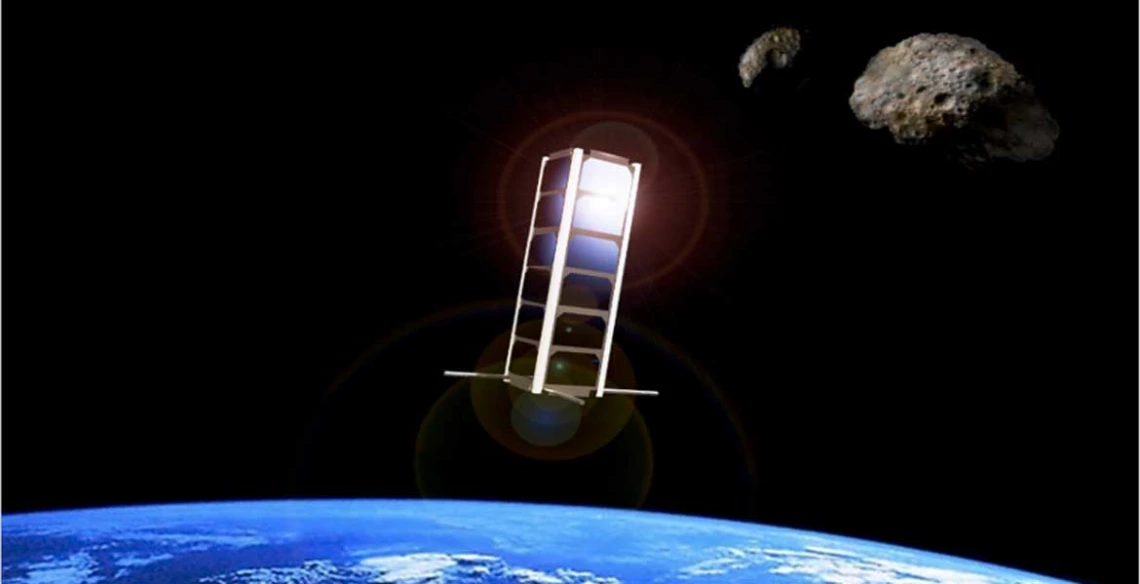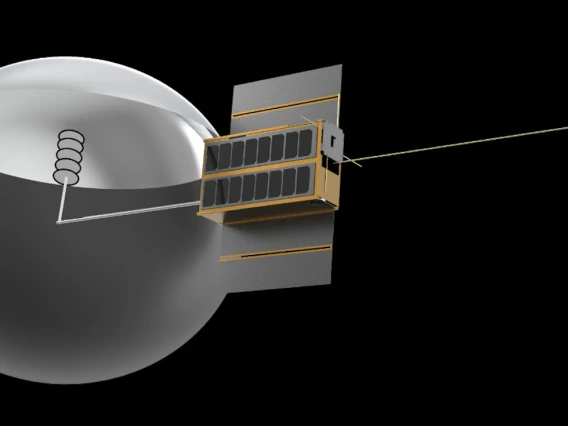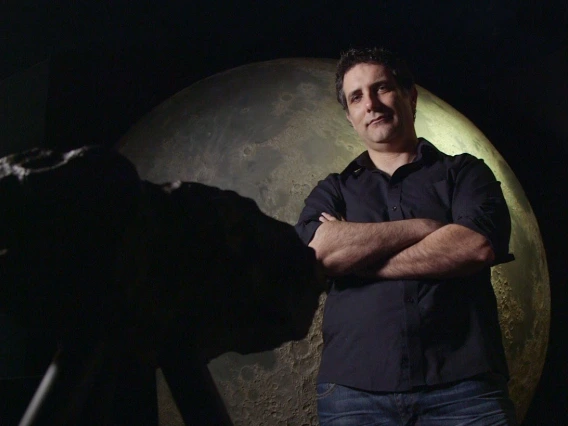$3M in NASA Funding to Help Students Build CubeSats
UA team to collaborate with students from Arizona and Puerto Rico on the next generation of space exploration technology.

Researchers will work with students to build Asteroid Origins Satellites, or AOSATs, to study the environment of asteroids from near-Earth orbit.
University of Arizona researchers will use $3 million in NASA funding over three years to research the low-gravity surface environments of asteroids, and to provide students from underrepresented backgrounds the opportunity to design, build and operate CubeSats, or miniature satellites, at the UA.
The project was selected through NASA's Minority University Research and Education Project Institutional Research Opportunity, or MIRO, program. The UA, which was designated a Hispanic-Serving Institution in 2018, is one of eight institutions to receive a share of more than $8.2 million in cooperative agreements awarded through the MIRO program.
"This project will help us understand asteroid surface geophysics in a way that no one has done before," said Erik Asphaug, deputy principal investigator for the project and a professor in the UA Lunar and Planetary Laboratory. "And the students get to participate in a low-cost endeavor that has huge implications for how we work with asteroids in near-Earth space."
There are many reasons to study asteroids, from the way they affect humans when their orbits cross paths with Earth, to their potential as sources of spacecraft fuel, to the clues they may hold about the origins of planets and life. But it's difficult and expensive to send missions to asteroids, and it's impossible to simulate their low-gravity environments – where a human would weigh as much as a mouse – on Earth for long durations.
The answer is to build a lab in space, according to Jekan Thanga, principal investigator of the MIRO project, head of the UA SpaceTREx Laboratory and assistant professor in the Department of Aerospace and Mechanical Engineering.
The project will recreate the surface environments of asteroids by placing asteroid origins satellites, or AOSATs, small CubeSat laboratories containing asteroid material that came to the Earth in the form of meteorites, into low Earth orbit. Rotating at about the speed of the second hand on a clock, each AOSAT will generate a centrifugal force equivalent to an asteroid's extremely low surface gravity. Scientists can't recreate asteroid gravity in this manner onboard the International Space Station because it is too subtle of a force – smaller than the vibrations from the pumps and fans that keep the astronauts alive.
Because it's much cheaper and easier to operate a laboratory-spacecraft in low Earth orbit than it is to spend hundreds of millions of dollars going all the way to an asteroid, AOSATs will offer repeated opportunities for basic science and act as a test bed for asteroid-bound hardware.
"We are coming up with an asteroid proving ground without having to go to an asteroid," Thanga said. "This is a whole different way of doing science."
Students from the UA, Pima Community College and the University of Puerto Rico will have the opportunity to build three AOSATs, each about the size of a loaf of bread. Then, they will operate them in low Earth orbit, conducting basic research on their simulated "patch of asteroid." Research areas will include how to extract water for conversion into rocket fuel, testing robotic devices capable of digging and planting sensors on an asteroid, and sending bursts of gas and firing small projectiles into a low-gravity asteroid surface.
"This is a unique project which will provide students the opportunity to study different aspects of asteroid science," said Desiree Cotto-Figueroa, project co-investigator and assistant professor at the University of Puerto Rico at Humacao. "The continuous discovery of unknown near-Earth asteroids, as well as gaining an understanding of their origin and evolution, is very important."
This project will help us understand asteroid surface geophysics in a way that no one has done before."
Ultimately, the researchers envision the AOSAT as a pathway toward a significantly larger centrifugal spacecraft that could act as a semipermanent proving ground in low Earth orbit. This accessible facility would allow researchers to realistically test how an entire lander or an astronaut might interact with an asteroid surface – what Asphaug calls a "persistent link" between distant asteroid environments and the Earth. Such a facility could even be used to recreate a "patch of the moon" where astronauts could train and adapt to the low-gravity lunar conditions humans first experienced in the Apollo missions 50 years ago.
"Our decades-spanning experience in planetary exploration makes the UA an ideal institution to lead this STEM education and research project," said UA President Robert C. Robbins. "Underrepresented students from both our local community and partners will have an opportunity to learn about asteroid science and space systems engineering through a project that will actually launch into space. This is the kind of incredible opportunity we are proud to offer students for them to have the tools and experience to succeed."
In the near term, "we would like to build a pipeline of students working with professors to conceptualize, design, build and fly CubeSats at the University of Arizona," Thanga said. "We're looking to the day in the future where sending a CubeSat to space might be as easy as sending a payload up on a balloon flight to do an experiment in high altitude."
Roberto Furfaro, professor of systems and industrial engineering and head of the Space Situational Awareness Initiative under which SpaceTREx operates, said that with the help of the College of Engineering; the provost; and the Office of Research, Discovery and Innovation, he recruited Thanga specifically to be "the missing link" between CubeSat research and space situational awareness, or SSA, which is the ability to monitor, understand and predict the behavior of objects orbiting Earth.
"He represents what we call space-based SSA," Furfaro said. "He could potentially build a CubeSat that can not only view the Earth or other planetary bodies, but can observe other spacecraft or debris to learn more about the characteristics and behavior of objects in space, for example."
Other project collaborators include co-investigator Greg Ogden of the UA Department of Chemical and Environmental Engineering; co-investigator Dennis Just of Pima Community College; co-investigator Joseph Masiero of NASA's Jet Propulsion Laboratory; and Viranga Perera at the Johns Hopkins University Applied Physics Laboratory, who will be evaluating effectiveness and advising the team on how to meet diversity goals.



